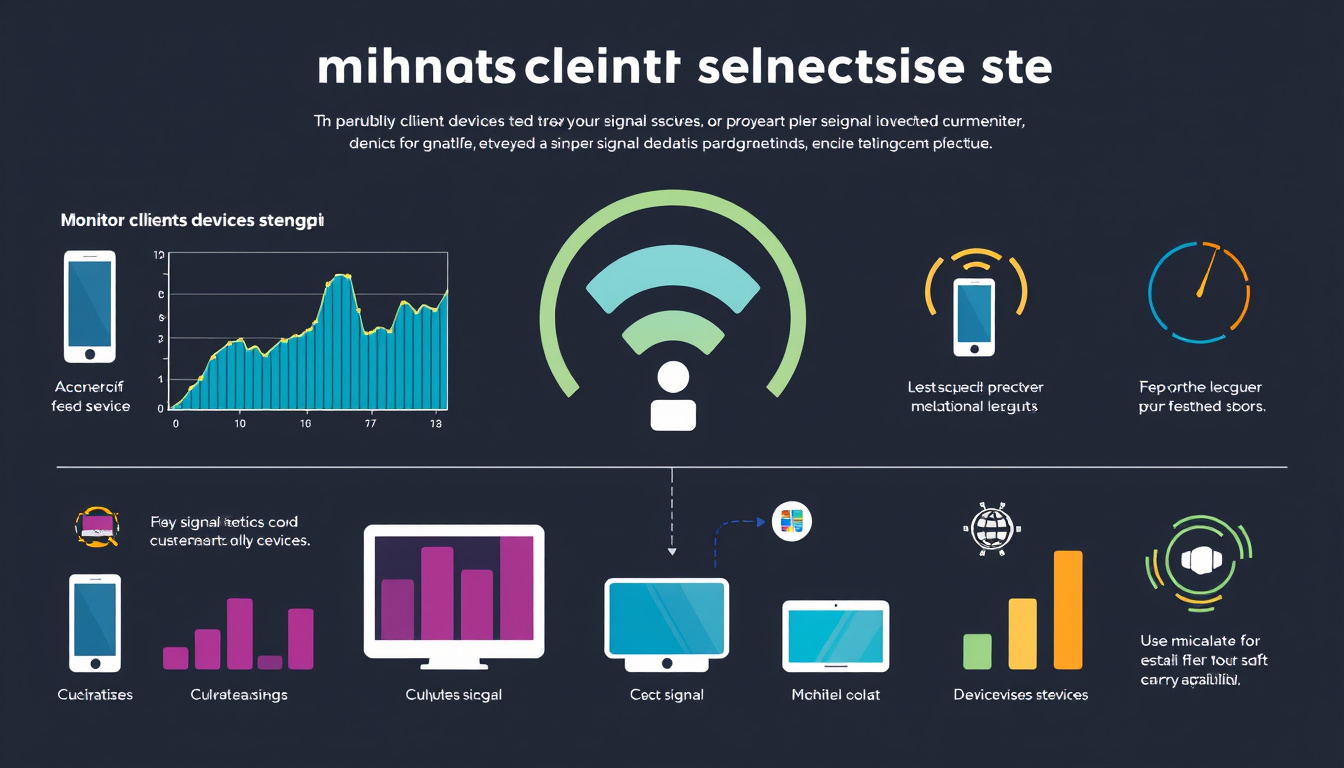In today’s digital environment, reliable connectivity is paramount for both personal and business operations. One essential aspect of maintaining network efficiency is understanding and monitoring the signal strength of client devices. A robust signal ensures a smooth experience, reducing downtime and enhancing productivity. Here’s a comprehensive look at how to effectively monitor client devices’ signal strength to optimize connectivity.
Why Monitor Signal Strength?
Monitoring signal strength serves multiple critical purposes:
- Performance Optimization: A strong signal improves connection speeds and reduces latency, directly impacting user experience.
- Network Security: Weak signals can expose a network to vulnerabilities, making it easier for unauthorized users to access sensitive information.
- Troubleshooting: Regular signal strength evaluations help identify and resolve connectivity issues before they escalate into significant problems.
- Resource Management: By analyzing signal data, organizations can allocate bandwidth more efficiently, ensuring that high-demand areas receive adequate resources.
Tools for Monitoring Signal Strength

Several tools are available to help you effectively monitor the signal strength of client devices. Here are some of the top recommendations:
1. SolarWinds Network Performance Monitor (NPM)
SolarWinds NPM stands out for its comprehensive Wi-Fi monitoring capabilities. It enables users to automatically discover wireless access points, categorize devices, and visualize coverage through heat maps. By using NPM, network administrators can track key metrics such as Received Signal Strength Indication (RSSI), connection status, and overall network health—allowing for timely troubleshooting and optimization efforts.
2. Datadog Network Monitoring
This multi-functional monitoring solution can track not only the health of individual access points but also provide crucial insights into network-wide performance metrics. Datadog allows for the tagging of devices and deep visibility into their signal strength, fostering proactive maintenance strategies.
3. PRTG Network Monitor
PRTG offers exceptional flexibility in monitoring both wired and wireless environments. It can be set to ping access points and gather signal strength information continuously, delivering real-time alerts when performance drops below specified thresholds. This makes it an effective choice for maintaining optimal network conditions.
4. NetSpot
For those looking to map wireless coverage visually, NetSpot is an excellent choice. It allows users to create detailed heat maps of Wi-Fi signals, identifying dead zones and areas that require enhancement. This data enables targeted deployment of additional access points to improve overall coverage.
5. Acrylic Wi-Fi
Acrylic provides a detailed analysis of wireless networks and can visualize the signal strength of multiple devices in real-time. It’s particularly useful for troubleshooting and optimizing settings for specific devices within a network.
Best Practices for Monitoring Signal Strength
To maximize the effectiveness of signal strength monitoring, consider the following best practices:
- Regular Assessments: Schedule regular checks on signal performance to address issues proactively.
- Centralized Monitoring: Utilize a centralized dashboard that aggregates data from multiple tools for a comprehensive view of your network health.
- Adaptive Responses: Be prepared to reconfigure access points based on real-time data insights to improve connectivity. For instance, moving an access point to a more central location can dramatically enhance coverage.
- Engage with Clients: Encourage users to report connectivity issues, as real-world feedback can inform troubleshooting efforts and adjustments.
Conclusion
Monitoring the signal strength of client devices is essential for optimizing connectivity and ensuring robust network performance. By leveraging specialized tools and following proactive management strategies, organizations can significantly enhance their network reliability and user satisfaction. Maintaining a keen eye on signal strength not only boosts operational efficiency but also fortifies network security against unauthorized access and potential vulnerabilities.



